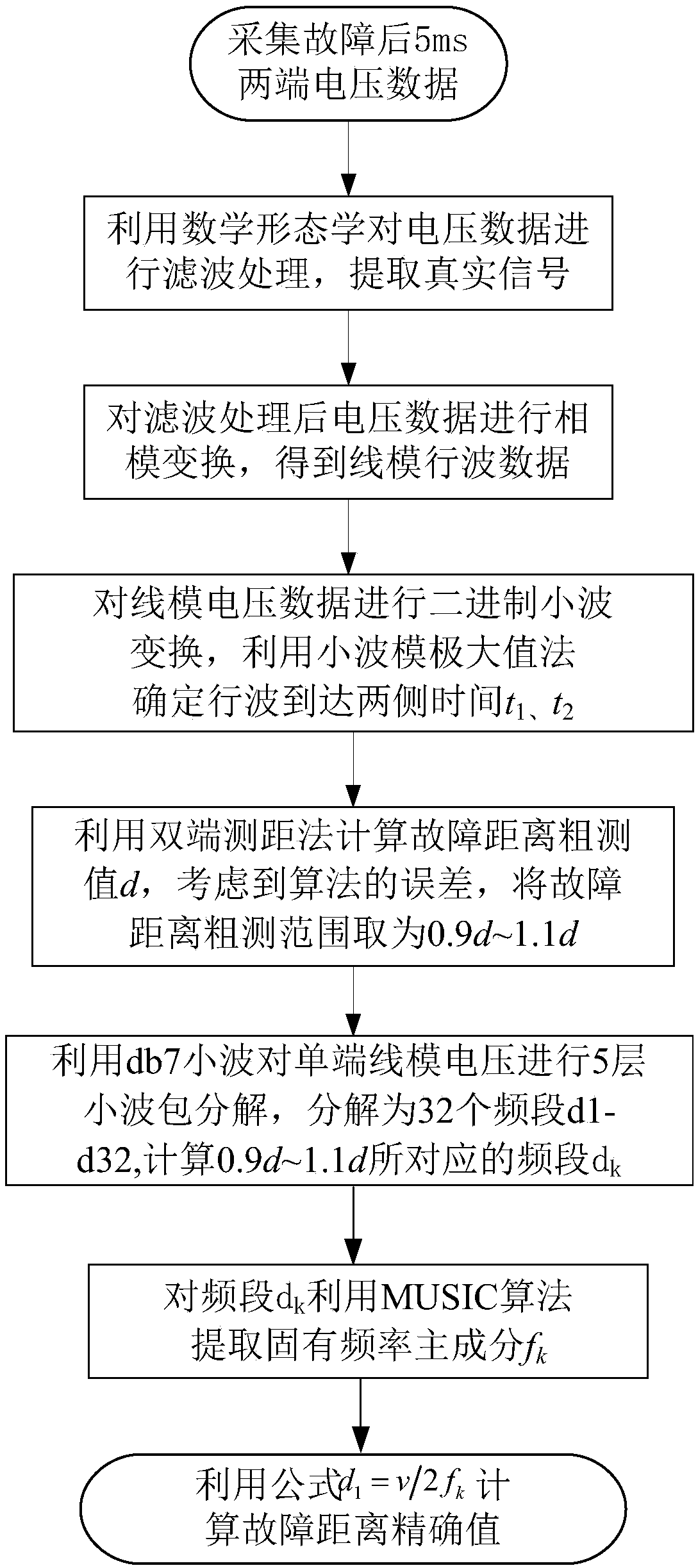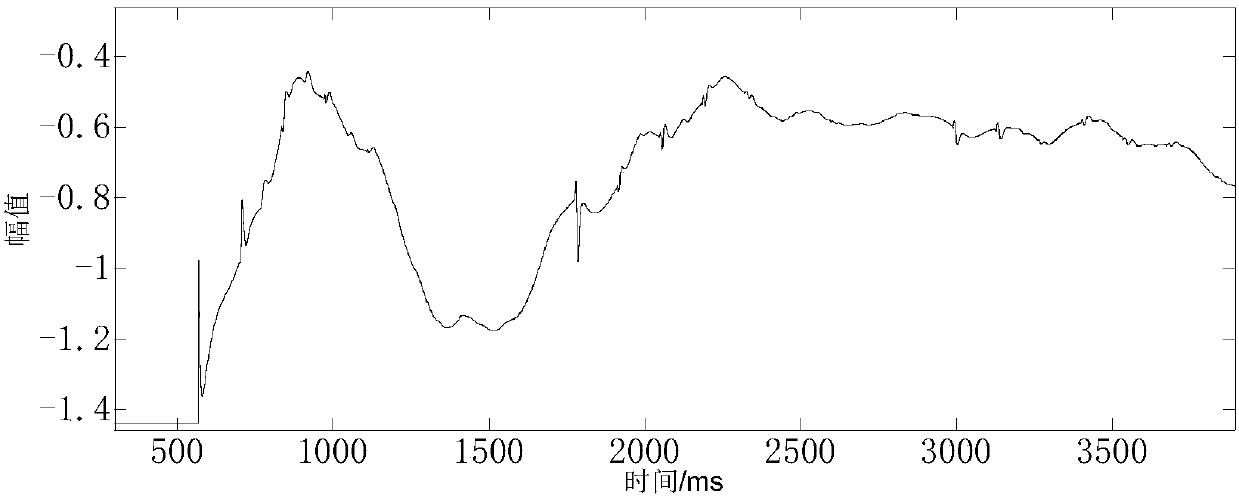A fault location method for HVDC transmission lines
A transmission line and fault distance measurement technology, which is applied in the direction of fault location and fault detection according to the conductor type, can solve the problem that the natural frequency is difficult to extract, and achieve the effect of improving accuracy
- Summary
- Abstract
- Description
- Claims
- Application Information
AI Technical Summary
Problems solved by technology
Method used
Image
Examples
Embodiment
[0079] The Cigre model of the International Conference on Large Power Grids is selected as the prototype, and a bipolar twelve-pulse HVDC DC transmission model is built on the transient simulation software PSCAD / EMTDC. The simulation model is as follows: Figure 8 shown. Single-pole grounding faults are set at 100, 400, 500, 700, and 900 km away from the rectifier side, and the fault transition resistances are 0Ω and 100Ω, respectively. Set the system to have a single-level ground fault at 1.5s, and the sampling rate is 10kHz.
[0080] 1) Single pole ground fault
[0081] For a single-pole grounding fault on a DC line, collect fault voltage data at both ends of the line, use the algorithm proposed in this application to obtain the time when the fault traveling wave reaches both ends of the line, the rough measurement value of the fault distance, the rough measurement range of the fault distance, and the natural frequency range, wavelet packet frequency band and natural frequ...
PUM
 Login to View More
Login to View More Abstract
Description
Claims
Application Information
 Login to View More
Login to View More - R&D
- Intellectual Property
- Life Sciences
- Materials
- Tech Scout
- Unparalleled Data Quality
- Higher Quality Content
- 60% Fewer Hallucinations
Browse by: Latest US Patents, China's latest patents, Technical Efficacy Thesaurus, Application Domain, Technology Topic, Popular Technical Reports.
© 2025 PatSnap. All rights reserved.Legal|Privacy policy|Modern Slavery Act Transparency Statement|Sitemap|About US| Contact US: help@patsnap.com



